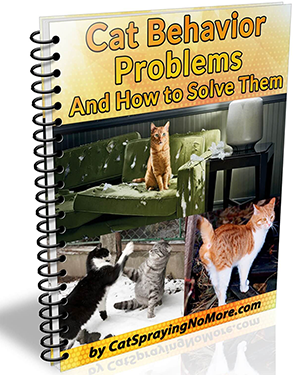jamesdorans
5 Common Cat Behaviors and How to Understand Them
Cats are fascinating creatures that can be mysterious at times. They have their own unique personalities, quirks, and behaviors that can leave us scratching our heads in confusion. In this article, we will explore some of the most common cat behaviors and how you can understand them better.
1. Introduction to Common Cat Behaviors
When it comes to understanding your feline friend, it’s essential to know what is normal behavior for cats. Some common cat behaviors include:
Scratching furniture or carpets
Meowing or making other sounds
Hiding under beds or in closets
Playing with toys or household items
Clinginess or affectionate behavior
2. Understanding Aggression in Cats
Aggressive behavior in cats can be alarming, but it’s important to remember that aggression is a natural part of a cat’s behavioral repertoire. Some reasons why cats may exhibit aggressive behavior include fear, anxiety, competition for resources, or pain. If your cat is showing signs of aggression towards people or other pets, it’s best to consult with a veterinarian or animal behaviorist for guidance on how to manage the situation safely.
3. Exploring the Meaning of Meowing and Other Sounds
Meowing is one of the primary ways that cats communicate with humans and other animals. However, not all meows mean the same thing. For example, a loud, urgent meow might indicate that your cat needs food or water, while a soft, gentle meow could be a sign of greeting or affection. It’s crucial to pay attention to the context and tone of your cat’s vocalizations to understand what they are trying to tell you.
4. The Importance of Scratching and Clawing
Scratching and clawing are natural behaviors for cats, as they help them maintain healthy nails and mark their territory. However, many pet parents struggle with managing these behaviors when they result in damage to furniture or walls. To prevent destructive scratching, provide your cat with appropriate scratching surfaces, such as a designated scratching post or cardboard box filled with kitty litter.
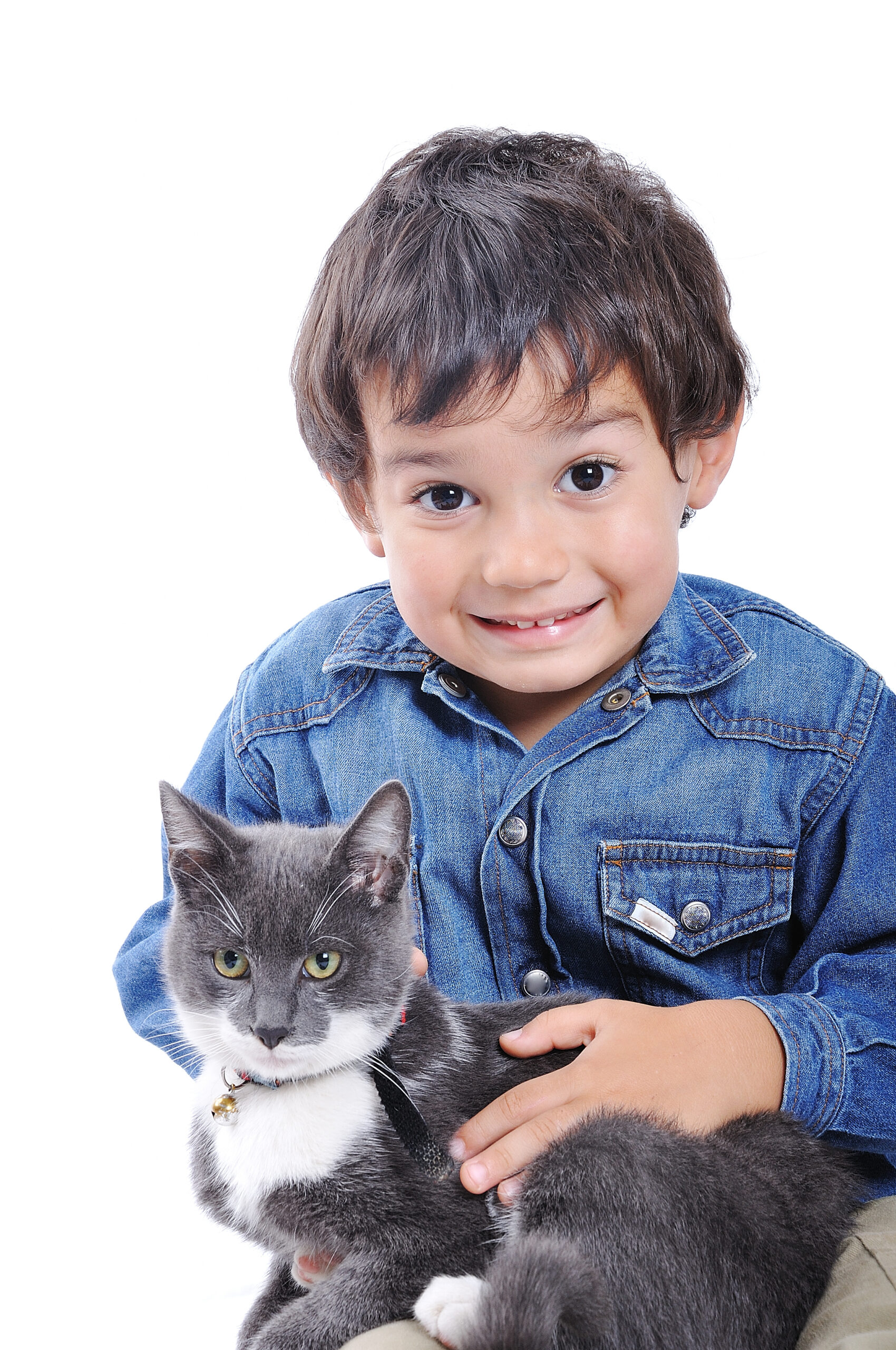
5. Toilet Training Your Cat: Litter Box Basics
Toilet training your cat involves providing them with an easily accessible litter box, cleaning it regularly, and monitoring their use of it. Make sure to place the litter box in a quiet location away from high traffic areas, and avoid using scented litters or harsh chemicals that could irritate your cat’s sensitive nose. Regularly scooping the litter and replacing it every week will also keep things fresh and inviting for your furry friend.
6. Playtime with Your Feline Friend
Playtime is essential for keeping your cat physically active and mentally stimulated. Provide your cat with a variety of toys, including wand toys, laser pointers, and puzzle feeders, to encourage playful behavior. You can also rotate toys to keep things interesting and create hiding spots around the house where your cat can hunt and stalk prey.
7. How to Handle Stress and Anxiety in Cats
Many cats experience stress and anxiety due to changes in their environment or routine. Signs of stress and anxiety in cats include excessive grooming, hiding, and agitation. To reduce your cat’s stress levels, make sure to provide them with plenty of hiding places, consistent routines, and positive reinforcement through treats and praise. Consult with your vet if necessary about medication options or other forms of support.
8. Healthy Eating Habits for a Happy Cat
A balanced diet is critical for your cat’s overall health and wellbeing. Choose a high-quality commercial cat food that meets your cat’s nutritional requirements based on age, weight, and activity level. Avoid overfeeding your cat, and offer regular portions throughout the day instead of leaving out free-choice food. Also, provide access to fresh water at all times.
9. Brushing, Bathing, and Grooming Tips
Regular brushing and bathing can help keep your cat’s coat shiny and healthy. Use a soft-bristled brush to remove loose hair and distribute skin oils, and bathe your cat only when necessary with a mild, fragrance-free shampoo. Trim your cat’s nails regularly, and check their ears and teeth for any signs of infection or disease.
10. Socializing Your Cat with Other Pets and People
Socialization is key to helping your cat develop into a confident and friendly companion. Introduce your cat slowly to new people and pets, rewarding calm behavior with treats and praise. Encourage positive interactions by providing safe spaces for your cat to retreat to if needed, and never force socialization beyond your cat’s comfort zone. With time and effort, your cat can become a beloved member of your family and community.
Why a Scratching Post is Essential for Your Cat’s Health, and How to Find the Perfect One
Cats are fascinating creatures that bring joy and love into our lives. They have unique personalities, quirks, and behaviors that make them so special. However, as cat owners, it’s essential to provide them with everything they need to thrive. One of the most important things you can do for your feline friend is to give them a scratching post. In this article, we will explore why a scratching post is crucial for your cat’s health, how to choose the perfect one, common mistakes people make when buying a scratching post, and the benefits of providing your cat with a scratching post.
Introduction to Scratching Posts and Their Importance
Scratching posts are an excellent way to keep your cat entertained while also fulfilling their natural instincts. Cats have sharp claws that they use for hunting, climbing, and self-defense. When they don’t have anything to scratch, they may turn to furniture or other household items, which can lead to damage and costly repairs. A scratching post provides a safe outlet for your cat to sharpen their claws, stretch their muscles, and mark their territory. It helps prevent boredom and anxiety, which can lead to destructive behavior. Additionally, scratching releases stress hormones, helping your cat relax and unwind after a long day.
How to Choose the Perfect Scratching Post for Your Cat’s Needs
Choosing the right scratching post requires some research and consideration. First, think about your cat’s size and weight. You want to ensure that the post is sturdy enough to support them without tipping over. The height of the post should be at least 16 inches high, allowing your cat to fully extend their body while scratching. Consider the texture of the surface; cats prefer rougher surfaces like sisal rope or carpet. Look for materials that won’t shed or come apart easily, causing potential hazards. Finally, consider the design and shape of the post. Some cats prefer vertical posts, while others enjoy horizontal ones. Experiment with different styles until you find what works best for your furry friend.
Common Mistakes People Make When Buying a Scratching Post
One mistake people often make when purchasing a scratching post is not considering their cat’s needs. For example, if you have a large breed cat, you’ll need a sturdier post than someone who has a smaller cat. Another mistake is choosing a post made from inferior materials that could harm your cat or break down quickly. Also, avoid choosing a post that is too small or narrow, as it might not provide adequate support during scratching. Lastly, don’t forget to place the scratching post in a prominent location where your cat can see it and access it easily.
The Benefits of Providing Your Cat with a Scratching Post
Aside from keeping your home safe from destruction, there are many benefits to providing your cat with a scratching post. As mentioned earlier, it helps satisfy your cat’s natural urges to scratch and climb. It also encourages exercise and playtime, reducing boredom and promoting physical activity. Additionally, having a designated scratching area reduces the likelihood of your cat using their claws on humans or other pets. Overall, investing in a quality scratching post is an essential part of responsible pet ownership.
In conclusion, providing your cat with a scratching post isn’t just good for your home but great for your cat’s overall wellbeing. By following these tips, you can find the perfect scratching post for your cat’s specific needs and help them live happily and healthy.
Why a Scratching Pole is an Absolute Must-Have for Any Cat Owner
Introduction to Scratching Poles and Their Importance
Scratching poles are an essential item for any cat owner. They provide a safe and healthy outlet for your feline friend’s natural scratching behavior, which can help prevent damage to furniture, walls, and other household items. Without a designated scratching area, cats may resort to inappropriate scratching habits that could harm themselves or their surroundings.
The Benefits of Providing Your Cat with a Scratching Pole
There are several benefits to providing your cat with a scratching pole. Firstly, it helps maintain the health of your cat’s claws by allowing them to exercise and keep their nails trimmed naturally. Secondly, it provides a fun and engaging activity for your cat, helping to reduce boredom and anxiety. Additionally, having a dedicated scratching post can also help prevent unwanted behaviors such as biting or aggression.
How to Choose the Best Scratching Pole for Your Cat
When choosing a scratching pole, there are some important factors to consider. The first is size – make sure the pole is tall enough to allow your cat to fully stretch out while scratching. You should also look for a sturdy base to ensure stability and durability. It’s also important to choose a material that your cat prefers; many cats enjoy sisal rope or carpeted surfaces. Finally, consider the design and style of the scratching pole to ensure it fits well within your home decor.
Common Mistakes Cat Owners Make When It Comes to Scratching Poles
One common mistake cat owners make when it comes to scratching poles is not providing enough options. Cats have different preferences when it comes to scratching materials, so offering multiple types (such as sisal and carpet) can increase the likelihood that they will use the pole regularly. Another mistake is placing the scratching pole too close to another object, like a piece of furniture or wall. This can encourage inappropriate scratching behavior instead of directing it towards the pole.
Caring for Your Cat’s Scratching Pole
To care for your cat’s scratching pole, you should regularly clean it to remove loose fur and dirt buildup. You can also replace the scratching surface if needed, depending on how frequently your cat uses it. Additionally, be sure to monitor the condition of the pole over time and replace it if necessary to avoid potential safety hazards.
Conclusion: Why Every Cat Owner Should Invest in a Scratching Pole
In conclusion, investing in a high-quality scratching pole is an absolute must-have for any cat owner. Not only does it promote healthy claw maintenance and physical activity but also reduces stress and anxiety levels in cats. By following these tips and guidelines, you can find the perfect scratching pole for your feline companion and provide them with years of safe and satisfying scratching opportunities.
5 Common Cat Behaviors and How to Understand Them
Cats are fascinating creatures that can be mysterious at times. They have their own unique personalities, quirks, and behaviors that often leave us scratching our heads in confusion. In this article, we will explore five common cat behaviors and how you can understand them better.
Introduction to Common Cat Behaviors
One of the most important things to remember when it comes to understanding your feline friend is that cats are individuals with distinct personalities. Just like humans, they may exhibit certain traits more prominently than others. However, there are some general behavior patterns that many cats share. These include:
1. Aggression – Cats may display aggressive behavior towards people or other animals if they feel threatened or anxious. This could involve hissing, growling, swiping, or biting.
2. Meowing and Other Sounds – Cats use a variety of sounds to communicate with us, including meows, purrs, chirps, and growls. Learning what these different sounds mean can help you understand your cat’s needs and emotions better.
3. Scratching and Clawing – Scratching and clawing is a natural behavior for cats as it helps them maintain healthy nails and mark their territory. It’s essential to provide your cat with appropriate scratching surfaces to prevent damage to furniture and household items.
4. Toilet Training Your Cat – Litter box basics are crucial for keeping your cat happy and healthy. Make sure to choose the right litter, keep the box clean, and locate it in an easily accessible area.
5. Playtime with Your Feline Friend – Playtime is vital for your cat’s physical and mental well-being. Provide plenty of toys and engage in play sessions regularly to strengthen your bond and give your cat an outlet for exercise and stimulation.
Understanding Aggression in Cats
Aggression is one of the most common concerns among cat owners. If your cat displays aggressive behavior towards people or other animals, it’s essential to identify the cause and address it appropriately. Some possible reasons for aggression include fear, anxiety, pain, territoriality, or overstimulation. Consider scheduling a visit with your veterinarian to rule out any underlying medical issues and discuss strategies for managing your cat’s behavior.
Exploring the Meaning of Meowing and Other Sounds
Meowing is perhaps the most recognizable sound made by cats, but it’s not always easy to interpret its meaning. A loud, insistent meow might indicate that your cat wants food or attention, while a soft, plaintive mew might signal distress or discomfort. Pay close attention to the context and tone of your cat’s vocalizations to gain insight into their needs and emotions.
The Importance of Scratching and Clawing
Scratching and clawing is a normal part of a cat’s behavior, but it can also cause significant damage to furniture and household items. By providing your cat with appropriate scratching surfaces, such as a designated scratching post or pad, you can redirect their scratching behavior away from unwanted areas.
Toilet Training Your Cat: Litter Box Basics
Litter box training is critical for keeping your cat healthy and content. Choose a location that’s easily accessible and private, provide enough litter boxes (one per cat plus one extra), and make sure to scoop daily and replace litter frequently.
Playtime with Your Feline Friend
Playtime is essential for your cat’s physical and mental well-being. Provide plenty of toys, including both interactive and solo options, and engage in regular play sessions to strengthen your bond and give your cat an outlet for exercise and stimulation.
Socializing Your Cat with Other Animals and People
While cats are typically solitary animals, socialization can help them develop confidence and adaptability around new situations and environments. Gradually expose your cat to new experiences and introduce them to new animals or people slowly and calmly.
Healthy Eating Habits for Your Cat
A balanced diet is key to keeping your cat healthy and thriving. Offer a high-quality commercial cat food, avoid table scraps, and monitor portion sizes to ensure optimal weight maintenance.
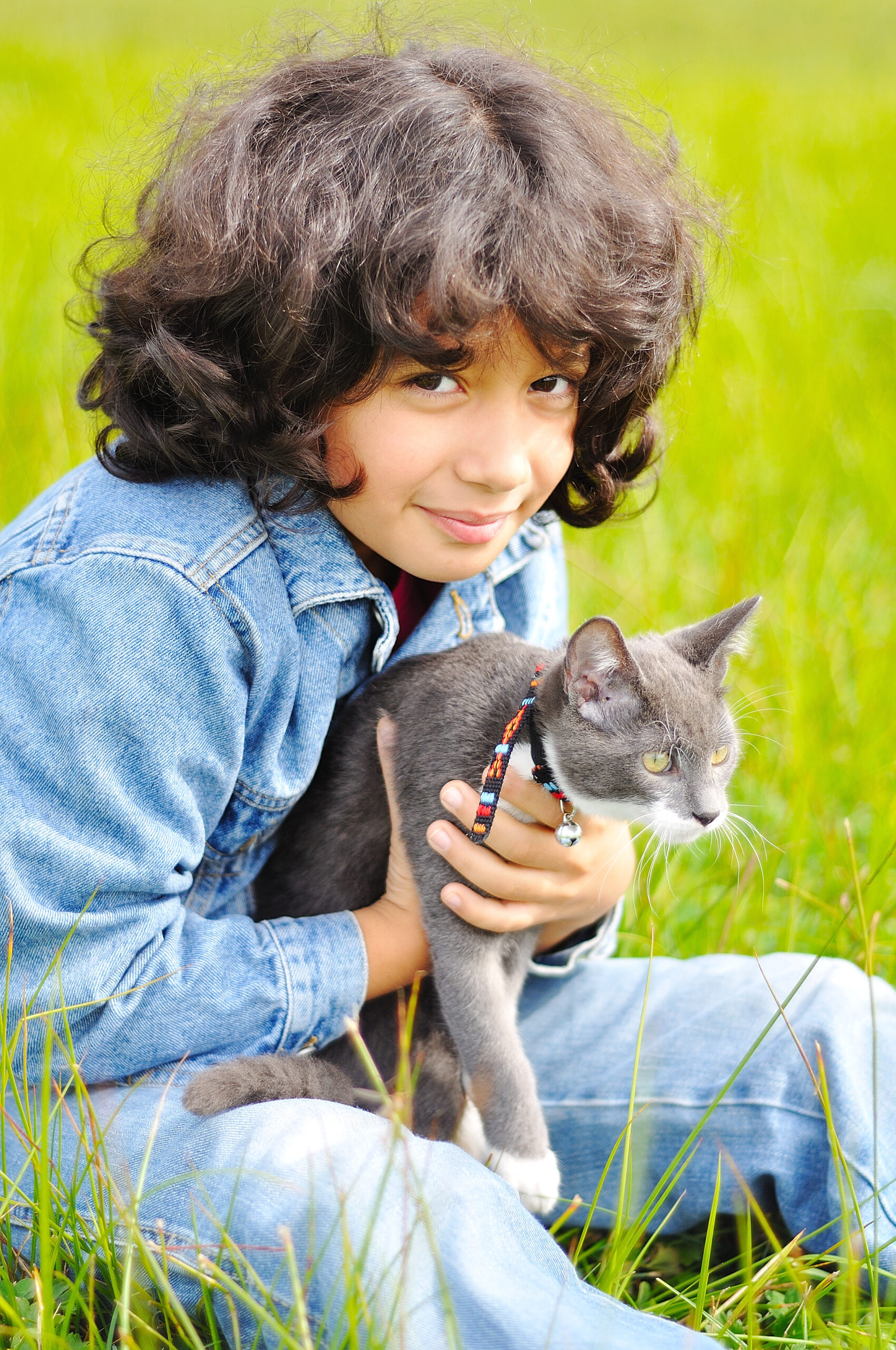
Signs of Illness or Discomfort in Cats
As with all animals, cats may show signs of illness or discomfort through changes in behavior or appearance. Keep an eye out for symptoms such as lethargy, loss of appetite, vomiting, diarrhea, sneezing, or runny eyes/noses. Consult with your vet promptly if you notice any concerning signs.
Conclusion: Tips for a Happy, Healthy Cat
By understanding your cat’s behavior and meeting their basic needs, you can create a safe, comfortable environment where they can thrive. Remember to schedule routine checkups with your vet, offer plenty of opportunities for play and enrichment, and shower your furry companion with love and affection.
How to Make Homemade Cat Toys That Will Entertain Your Furry Friend Forever
Introduction to Homemade Cat Toys
Making your own cat toys can be a fun and rewarding experience for both you and your furry friend. Not only are homemade toys more affordable than store-bought options, but they also offer endless possibilities when it comes to creativity and customization. In this post, we’ll explore the benefits of making your own cat toys, as well as how to make a simple DIY toy that will keep your kitty entertained forever!
The Benefits of Making Your Own Cat Toys
One of the biggest advantages of making your own cat toys is the cost savings. Store-bought toys can be expensive, especially if you have multiple cats or need to replace worn out toys frequently. By making your own toys, you can save money while still providing your pets with entertainment and stimulation.
Another benefit of DIY cat toys is the ability to customize them to suit your pet’s preferences. For example, some cats may love chasing after feathers, while others prefer crinkly paper or strings. With homemade toys, you can create something specific to your cat’s interests and personality.

How to Make a Simple Cat Toy
To get started with making your own cat toys, all you need is a few basic supplies:
1. String or yarn
2. Scissors
3. A stick or dowel rod
4. Feathers (optional)
Here’s how to make a simple cat toy using these materials:
1. Cut two pieces of string or yarn into equal lengths – about 6 inches each. Tie one piece around the middle of the stick or dowel rod, leaving enough length on either end to tie knots later.
2. Wrap the other piece of string around the top half of the stick, leaving an inch or so between wraps. This creates the “knotted” effect that many cats find irresistible.
3. If desired, add feathers to the bottom of the stick by tying them onto the loose ends of the first piece of string.
4. Tie off the loose ends of both pieces of string with secure double knots.
Creative Ideas for DIY Cat Toys
Once you’ve mastered the basics of making simple cat toys, there are countless ways to get creative and come up with new ideas. Here are just a few examples:
1. Use old cardboard tubes from toilet paper rolls or wrapping paper to create a tunnel or maze for your cat to play in.
2. Fill a plastic bottle with treats or small toys and watch your cat try to figure out how to get inside.
3. Create a DIY scratching post using rope tied around a sturdy pole or tree branch.
4. Attach bells or jingles to various household items like shoestrings or ribbon, then dangle them above your cat’s favorite hiding spot.
Conclusion and Final Thoughts
Making your own cat toys not only saves money and provides hours of entertainment for your feline companion, but it also allows you to express your creativity and bond with your pet through shared activities. Whether you choose to start with a simple design or experiment with more complex projects, making DIY cat toys is a great way to show your cat how much you care.
Cat Trees vs Scratching Poles: Which is Better for Your Pet
Cats are fascinating creatures that require a lot of attention and care. One crucial aspect of keeping your cat healthy is providing them with the right kind of exercise, which can help prevent obesity, boredom, and other behavioral issues. In this article, we will explore two popular options for exercising cats: cat trees vs scratching poles.

Introduction to Cat Trees vs Scratching Poles
Cat trees are tall structures made up of platforms, ramps, and perches that allow cats to climb, jump, and play. They come in various shapes and sizes, and some even have toys or balls attached to keep kitties entertained. On the other hand, scratching poles are vertical posts covered in sisal rope or carpet material that provide cats with an area to sharpen their claws and stretch their muscles. Both options offer unique benefits and drawbacks, so let’s take a closer look at each one.
The Importance of Exercise for Cats
Exercising your cat regularly helps maintain a healthy weight, improves joint flexibility, reduces stress levels, and prevents boredom-related behaviors such as excessive meowing or destructive scratching. A lack of physical activity can lead to obesity, which puts your pet at risk of developing diabetes, arthritis, and heart disease. Therefore, it’s essential to provide your feline friend with opportunities to move around and stay active.
How to Choose the Best Cat Tree or Scratching Pole
When selecting a cat tree or scratching pole, there are several factors to consider. Firstly, measure the size of your space and choose a structure that fits comfortably without taking up too much room. Secondly, think about your cat’s personality and preferences. Some cats love heights and enjoy lounging on elevated surfaces, while others prefer low-lying areas where they can hide or observe their surroundings. Thirdly, consider the materials used in construction. Look for sturdy structures made from durable materials like wood or metal, and avoid flimsy plastic products that could break easily. Finally, check for safety features such as non-skid bases or secure attachment points to prevent accidents.
Comparing the Benefits of Each Option
Let’s start by looking at the advantages of cat trees. These structures offer multiple levels and platforms for cats to climb and explore, promoting mental stimulation and physical activity. Many models also include toys or balls to engage kitties and encourage playtime. Additionally, cat trees can be placed near windows or doors, giving cats a bird’s eye view of their surroundings and reducing anxiety caused by separation. However, cat trees may not be ideal for households with small children who might accidentally knock over the structure or disturb sleeping pets.
On the other hand, scratching poles offer specific benefits as well. Unlike cat trees, these structures are typically more compact and easier to store, making them perfect for smaller spaces. They also provide cats with a designated area to scratch, helping prevent damage to furniture or walls. Moreover, scratching poles often feature different textures and angles, allowing cats to work out different parts of their bodies and improve overall agility. Nonetheless, some cats may find scratching poles limiting since they only offer one type of exercise.
Common Mistakes to Avoid When Buying a Cat Tree or Scratching Pole
One common mistake people make when purchasing cat trees or scratching poles is choosing poor quality products. Cheaply made items tend to fall apart quickly, putting both your pet and household decor at risk. Another error is buying structures that don’t match your cat’s needs or preferences. For example, if you own a senior cat with mobility problems, a high-level cat tree might not be suitable. Lastly, failing to supervise your cat during playtime can result in injuries or accidents. Always monitor your pet while using any new equipment and address any concerns promptly.
Conclusion: Which is Better for Your Pet?
Ultimately, whether you should opt for a cat tree or scratching pole depends on your individual circumstances. If you have limited space but still want to give your cat plenty of opportunity to climb and play, then a scratching pole might be best. However, if you prioritize mental stimulation and physical activity, then a cat tree would likely be better suited for your furry companion. Remember to always consult with your veterinarian before introducing any new equipment into your home and ensure that all products meet industry standards for safety and quality.
5 Ways to Keep Your Kitty Entertained with the Best Cat Toys on the Market
As a cat owner, you know how important it is to keep your feline friend entertained and engaged. Cats need mental stimulation and physical exercise just as much as we do, which is why investing in high-quality cat toys can make all the difference. In this post, we’ll explore five ways to keep your kitty amused with some of the best cat toys available today.
Types of Cat Toys and Why They’re Important
There are many different types of cat toys out there, each designed to provide your furry companion with something unique and engaging. Some popular options include:
1. Interactive toys like laser pointers or feather wands that allow you to play with your cat remotely. These toys help develop your cat’s hunting instincts while also providing valuable bonding time between pet and parent.

2. Puzzle toys that challenge your cat’s problem-solving skills by hiding treats or small toys inside them. This type of toy helps prevent boredom and encourages healthy curiosity.
3. Scratching posts and poles that give your cat an appropriate place to sharpen their claws and express their natural behavior.
4. Soft toys made from fabric or plush materials that offer comfort and security for cats who enjoy snuggling up with something soft.
The Best Cat Toys on the Market Today
With so many options available, choosing the right cat toys can be overwhelming. Here are some of our top picks for the best cat toys currently on the market:
1. The Petstages Tower of Tracks – A multi-level scratching post that includes tracks, tunnels, and perches for endless hours of entertainment.
2. The Da Bird Feather Toy – An interactive wand toy that mimics the movement of prey, perfect for getting your cat moving and engaged.
3. The Kong Classic Cat Toy – A durable rubber toy that provides a satisfying chew experience while helping to clean teeth and gums.
4. The Furbo Dog Camera: This isn’t technically a “toy,” but it’s a great way to check in on your cat when you’re not at home and even toss them treats remotely!
How to Choose the Right Toy for Your Kitty
Choosing the right cat toy depends largely on your individual cat’s preferences and personality traits. Consider factors such as age, activity level, and interests when selecting new toys. For example, if your cat loves chasing after things, a laser pointer might be a good choice. If they prefer solo playtime, a puzzle toy may be more suitable. It’s also essential to choose toys that are safe and non-toxic, especially if your cat likes to chew on their playthings.
Keeping Your Kitty Entertained with Variety
One of the keys to keeping your cat happy and engaged is to provide variety in their toys. Offer a mix of different types of toys, including both interactive and independent options. Rotate toys regularly to keep your cat interested, and consider incorporating new toys into their routine every few months.
Litter Box Essentials
In addition to providing plenty of fun and engaging toys, it’s crucial to ensure that your cat has access to proper litter box essentials. Make sure to use a high-quality brand of clumping litter, and change it frequently to maintain hygiene. Also, be mindful of the location of the litter box; ideally, it should be placed in a quiet area away from noise and traffic.
Feeding Your Feline: What You Need to Know
Finally, let’s talk about feeding your feline. As a responsible pet owner, it’s essential to provide your cat with a balanced diet that meets their nutritional needs. Consult with your veterinarian to determine what type of food is best suited for your cat based on their age, breed, and overall health status. Remember to always provide fresh water alongside meals, and avoid giving your cat table scraps or other human foods that could cause digestive issues.
Cat Trees, Scratching Poles, and Other Accessories
Lastly, don’t forget about the importance of providing your cat with additional accessories like cat trees, scratching poles, and climbing structures. These items serve multiple purposes, including offering a space for your cat to stretch and climb, providing a comfortable resting spot, and promoting healthy grooming habits through regular scratching.
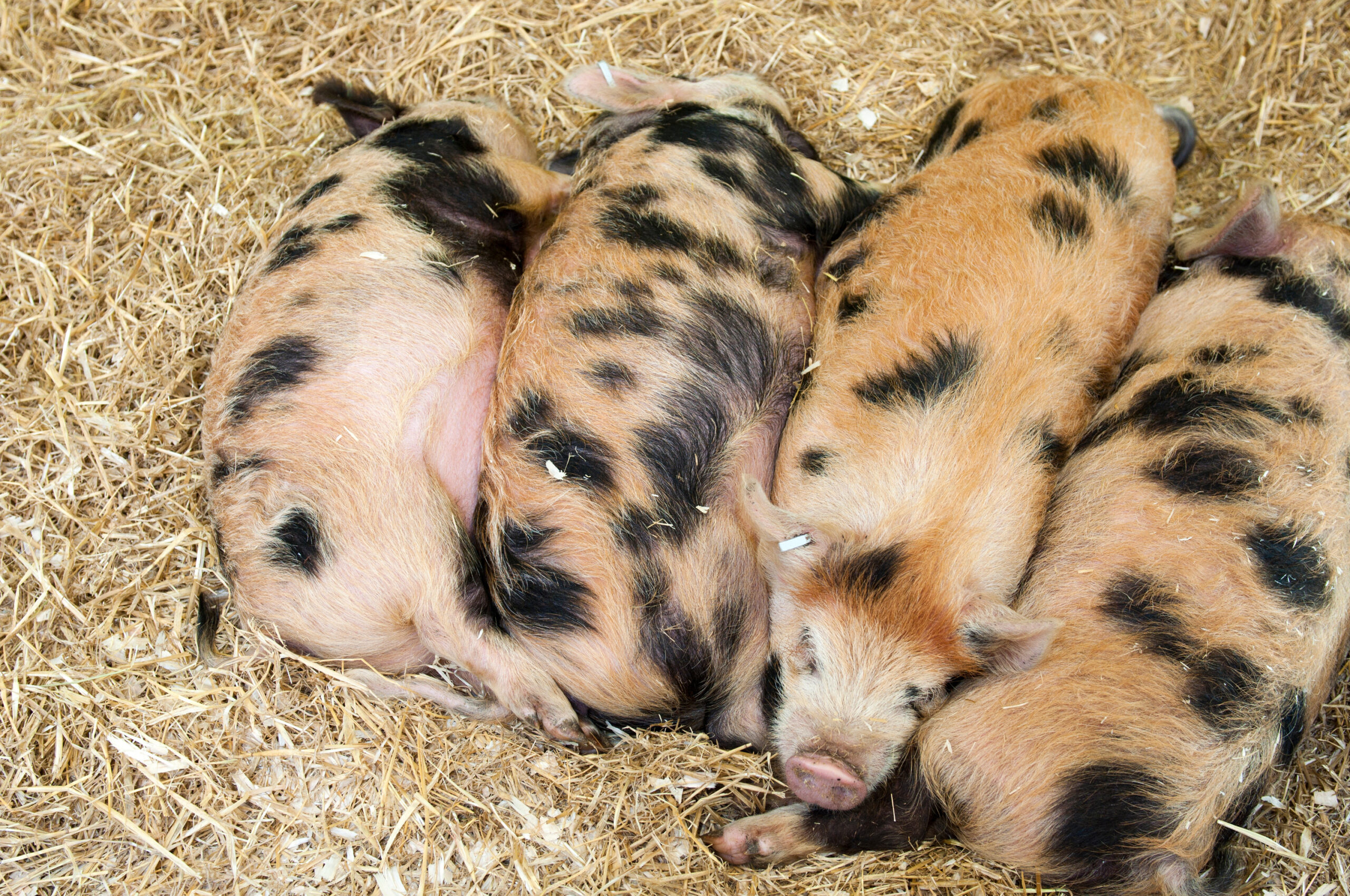
Conclusion
In conclusion, keeping your kitty entertained and engaged requires a combination of high-quality cat toys, appropriate litter box essentials, and accessories like cat trees and scratching poles. By following these tips and ensuring that your cat has everything they need to thrive, you can promote a long and happy life together filled with love and laughter.
Cat Trees, Scratching Poles, and Other Ways to Give Your Kitty Some Love
Introduction:
If you’re a cat owner, then you know how important it is to provide your feline friend with the best possible care. From food and water to playtime and exercise, there are many ways that we can show our cats some love. In this blog post, we will explore five different topics related to caring for your cat, including cat trees, scratching poles, litter boxes, fun cat toys, and nutritious meals. Let’s get started!
The Importance of a Litter Box for Your Cat’s Health:
One of the most essential things you need to provide for your cat is a clean and comfortable litter box. This should be placed in a quiet area where your kitty won’t feel disturbed while doing their business. Make sure to scoop out any waste daily and replace the litter entirely every week or so. It’s also crucial to choose the right type of litter for your cat’s needs; clumping litter is often preferred because it makes cleanup easier. By providing your cat with a proper litter box, you help prevent health issues like urinary tract infections and other problems associated with poor hygiene.
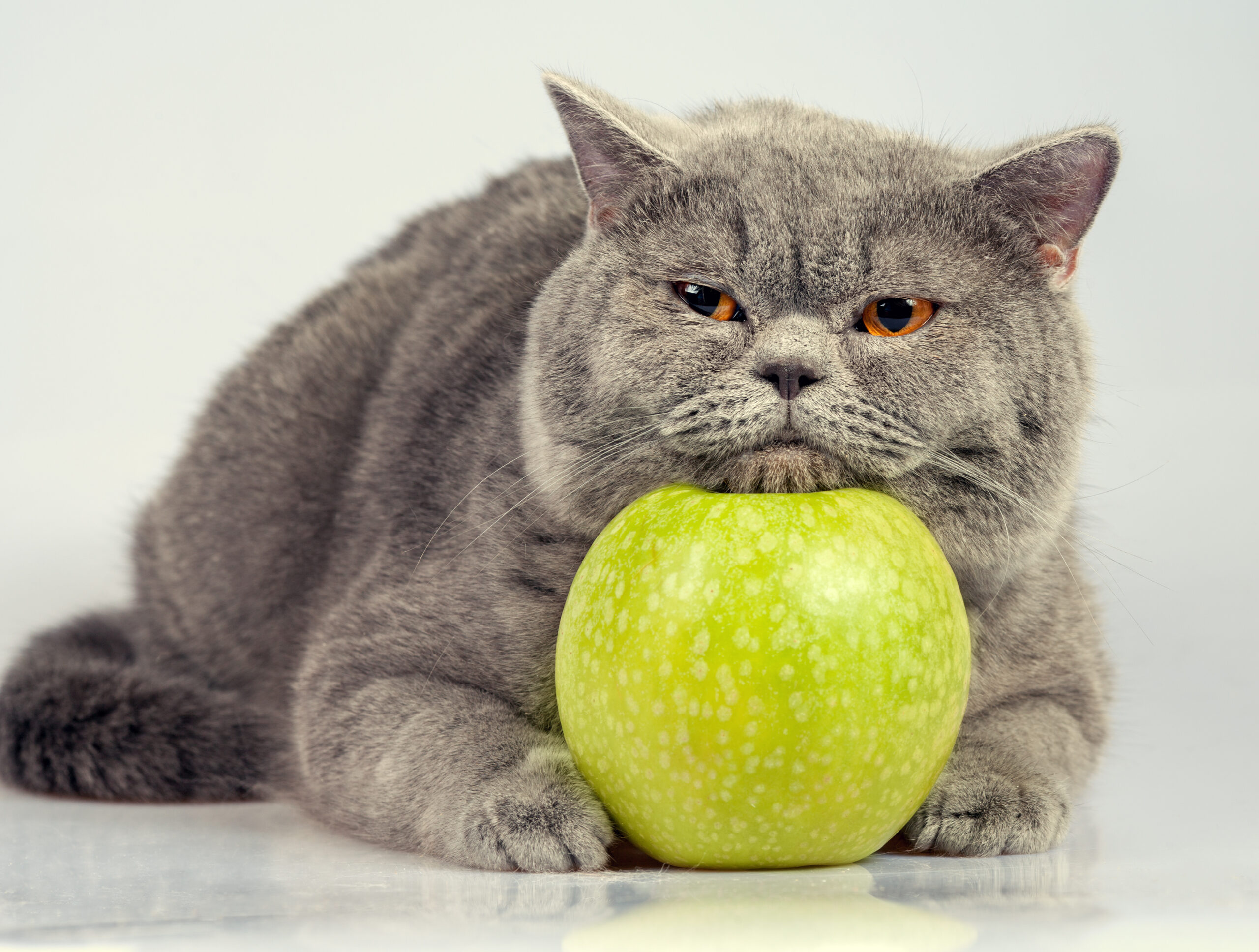
5 Fun Cat Toys That Will Keep Your Feline Entertained:
Cats need mental stimulation just as much as they require physical activity. Here are five types of toys that can keep your cat entertained for hours on end:
1. Laser pointers – These small gadgets allow you to direct a beam of light around the room, which your cat will chase after. Just make sure not to shine the laser directly into your pet’s eyes.
2. Feather wands – A stick with feathers attached at one end provides an interactive way to engage your cat’s hunting instincts. You can move the wand around to simulate prey movement, and your cat will pounce and swat at it.
3. Interactive puzzle toys – These toys have hidden compartments that hold treats or toys inside, requiring your cat to solve a puzzle to access them. They promote problem-solving skills and encourage mental stimulation.
4. Balls with bells – Many cats enjoy batting around balls with bells inside, making for a noisy but entertaining game.
5. Cardboard boxes – Believe it or not, simple cardboard boxes can provide hours of amusement for cats. Cut holes in the sides and top of the box to create a cozy hiding spot or add tunnels made from paper tubes for extra excitement.
A Guide to Choosing the Best Cat Supplies for Your Furry Friend:
As a responsible cat owner, you want to ensure that you’re providing your furry companion with everything they need to thrive. When choosing supplies for your cat, consider factors such as their age, breed, and personality. For example, older cats may benefit from a soft bed or ramps to assist with mobility issues. Breeds with long hair may require regular grooming to avoid matting and skin irritation. And if your cat tends to chew on things, investing in durable toys can save you money in the long run. Additionally, make sure to purchase high-quality food and water bowls, as well as a sturdy litter box. With these essentials covered, your cat will be set up for success.
Feeding Your Cat: What You Need to Know About Nutrition and Portion Control:
Providing your cat with a balanced diet is critical for their overall health and wellbeing. The first step is selecting a reputable brand of cat food that meets all necessary nutrient requirements. Be mindful of portion sizes, especially if your cat has a history of obesity or weight management issues. A general rule of thumb is to feed your cat twice per day, using measuring cups to ensure that you’re not overfeeding. It’s also okay to offer occasional treats, but limit them to no more than 10% of your cat’s total caloric intake. Finally, always provide fresh water for your cat, either through a water dish or a drinking fountain.
Why Scratching Poles Are Essential for Your Cat’s Well-Being:
Scratching is a natural behavior for cats, allowing them to mark their territory and maintain healthy claws. However, without a designated scratching surface, your cat may resort to damaging furniture or walls instead. Providing a scratching pole or post gives your cat an appropriate place to fulfill this innate desire. Look for ones made from sturdy materials like sisal rope or wood, and position them in areas where your cat spends time. Regularly inspect the scratching surface for wear and tear, replacing it when needed. By offering a suitable alternative, you can protect both your home and your cat’s wellness.
When is it Too Late to Neuter a Cat?
Neutering, also known as castration in males and spaying in females, is a common surgical procedure performed on cats to prevent them from reproducing. It offers numerous benefits, including controlling the pet population, reducing certain health risks, and managing behavioral issues. However, cat owners often wonder when is the right time to neuter their feline companions and if there is a point when it becomes too late. This article aims to address this important question.
Early Neutering
Early neutering refers to performing the procedure at a very young age, typically between 8 and 16 weeks. This approach has become increasingly popular due to its numerous advantages, including:
a. Population Control: Early neutering helps prevent unwanted litters and contributes to controlling the overpopulation of cats.
b. Behavior Modification: Neutering at a young age can mitigate undesirable behaviors, such as urine spraying and aggression, in male cats.
c. Health Benefits: It may reduce the risk of certain health issues, like testicular cancer in males and uterine infections in females.
Adult Neutering
Neutering can be safely performed on adult cats as well, and there is no set age at which it becomes “too late.” However, there are some considerations to keep in mind:
a. Behavior: Neutering adult cats may not always eliminate ingrained behaviors like spraying or aggression, although it can still help reduce them.
b. Health Benefits: Neutering can still provide health benefits to adult cats, such as reducing the risk of certain reproductive-related diseases.
c. Anesthesia and Recovery: Older cats may require more careful monitoring during anesthesia and a longer recovery period.
Senior Cats
Even senior cats can be neutered if there is a medical need or behavioral issue to address. However, the decision should be made in consultation with a veterinarian, taking into account the cat’s overall health and the specific reasons for neutering.
Special Cases
There are some situations where neutering may be recommended regardless of a cat’s age:
a. Medical Conditions: Neutering may be advised if a cat develops medical conditions related to the reproductive organs.
b. Unmanageable Behavior: In cases of extreme aggression, spraying, or other behavior issues, neutering may be considered as part of a behavior modification plan.
Consultation with a Veterinarian
The decision of when to neuter a cat should always be made in consultation with a qualified veterinarian. They can assess the cat’s individual health, behavior, and specific circumstances to determine the most appropriate timing for the procedure.
More information from a vet click here
Conclusion
In conclusion, there is no specific age at which it becomes “too late” to neuter a cat. The decision should be based on individual factors such as the cat’s age, health, behavior, and specific circumstances. Neutering can offer various benefits throughout a cat’s life, from preventing unwanted litters to reducing certain health risks. Therefore, it is essential for cat owners to work closely with their veterinarians to make informed decisions regarding the timing of neutering for their feline companions.
Understanding Sudden House Soiling in Cats: Causes and Solutions
Few things are more frustrating for cat owners than discovering that their beloved feline friend is suddenly peeing in the house. Cats are generally fastidious creatures, and using the litter box is second nature to them. So, when a well-trained cat starts urinating indoors, it’s essential to explore the reasons behind this sudden change in behavior. In this article, we will delve into the various factors that might lead to your cat peeing in the house all of a sudden and provide guidance on how to address these issues.
Watch what Jackson Galaxy says about this problem.
- Medical Issues
One of the most critical first steps when dealing with sudden house soiling in cats is to rule out any underlying medical problems. Urinary tract infections, bladder stones, diabetes, and kidney disease can cause discomfort and increased urination. When a cat associates the litter box with pain, they may seek out other places to relieve themselves. If your cat is peeing outside the litter box unexpectedly, consult your veterinarian to ensure there are no underlying health issues.
- Litter Box Problems
Cats are meticulous about their bathroom habits, and any issues with the litter box can lead to house soiling. Consider the following litter box-related factors:
- Cleanliness: Cats prefer clean litter boxes. If the box is dirty or hasn’t been scooped regularly, your cat might avoid it.
- Litter Type: Cats can be picky about the type of litter they use. If you’ve recently changed the litter brand or type, your cat might not like the new texture or scent.
- Location: The location of the litter box matters. It should be in a quiet, easily accessible area, away from the cat’s food and water bowls.
- Size and Type: Some cats prefer larger litter boxes, while others may favor covered ones. Experiment with different sizes and types to see what your cat prefers.
- Stress and Anxiety
Cats are highly sensitive to changes in their environment and routine. Stressors such as moving to a new home, introducing a new pet, or changes in the household can trigger sudden house soiling. Cats may urinate inappropriately as a way to mark their territory or as a response to the stress they are experiencing. Reducing stressors and providing a calm, consistent environment can help alleviate this behavior.

- Marking Behavior
Unspayed or unneutered cats are more likely to engage in marking behavior. Marking involves spraying urine to establish territory or communicate with other cats. If your cat is not fixed, consider getting them spayed or neutered to reduce this behavior. Even after the procedure, it may take some time for the marking behavior to subside.
- Social or Behavioral Issues
Cats can develop behavioral problems that manifest as house soiling. These issues can include aggression, fear, or conflicts with other pets in the household. Addressing the underlying behavioral problems through training and, if necessary, consulting with a professional animal behaviorist can help resolve these issues.
- Changes in Routine
Cats thrive on routine, and even minor changes can disrupt their bathroom habits. If your cat has started peeing in the house after a significant change in your schedule, such as a new job or travel, they may be reacting to the disruption. Gradually reintroduce a routine that includes regular feeding and playtime to help them adjust.
- Aging and Health
As cats age, they may develop physical or cognitive issues that can contribute to house soiling. Older cats might have arthritis or other ailments that make it difficult for them to access the litter box comfortably. Provide them with easy-to-reach litter boxes, softer bedding, and regular veterinary care to manage age-related changes.
Conclusion
Sudden house soiling in cats can be a challenging issue to tackle, but understanding the potential causes is the first step toward finding a solution. Whether it’s a medical problem, litter box issues, stress and anxiety, marking behavior, social conflicts, changes in routine, or age-related changes, addressing the underlying cause is crucial. Consult with your veterinarian to rule out medical issues, and then work on creating a comfortable, stress-free environment for your feline friend. With patience, consistency, and sometimes professional guidance, you can help your cat return to using the litter box as nature intended.
Learn more about how to help them and going back into the litter box check out this link






